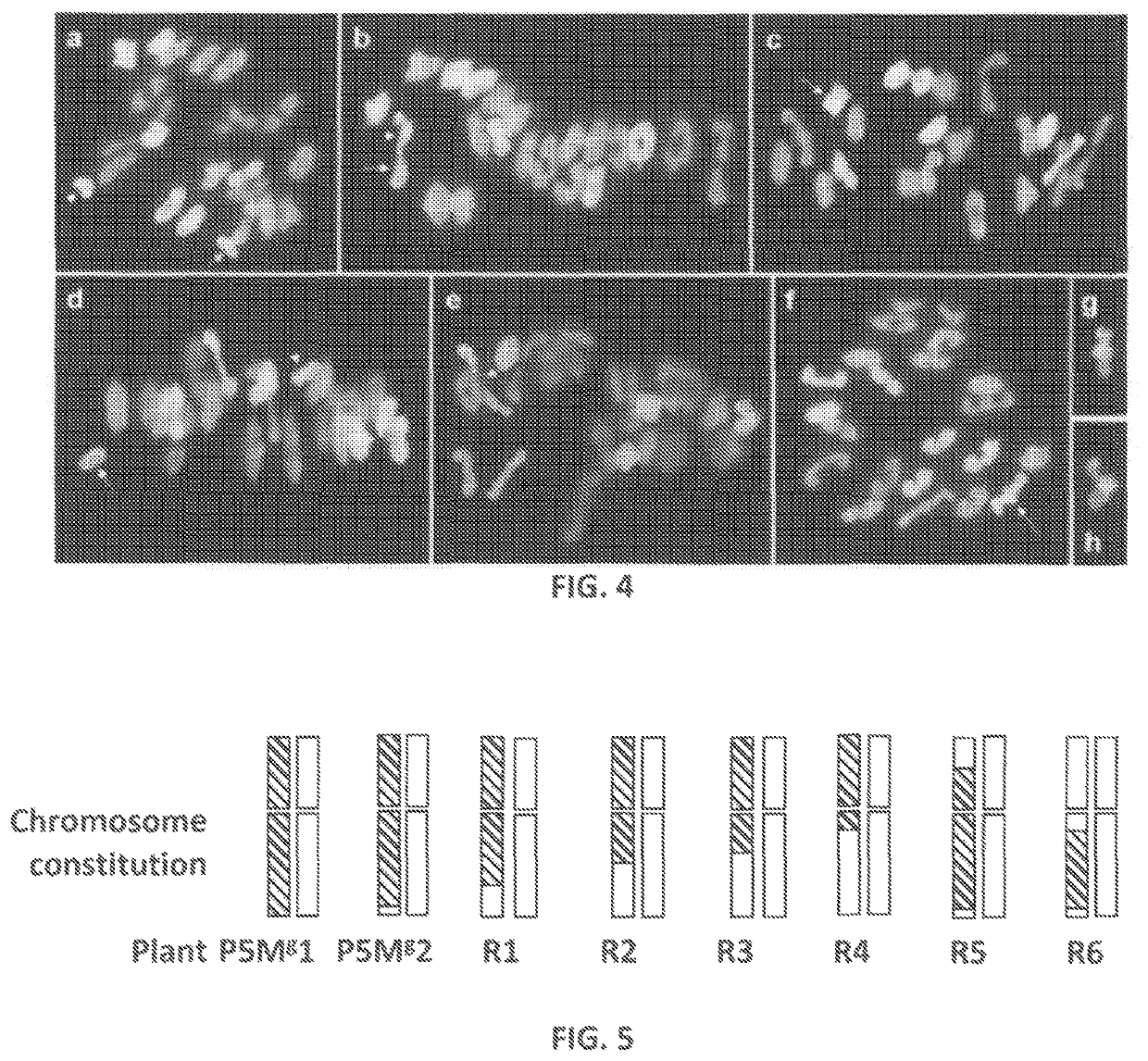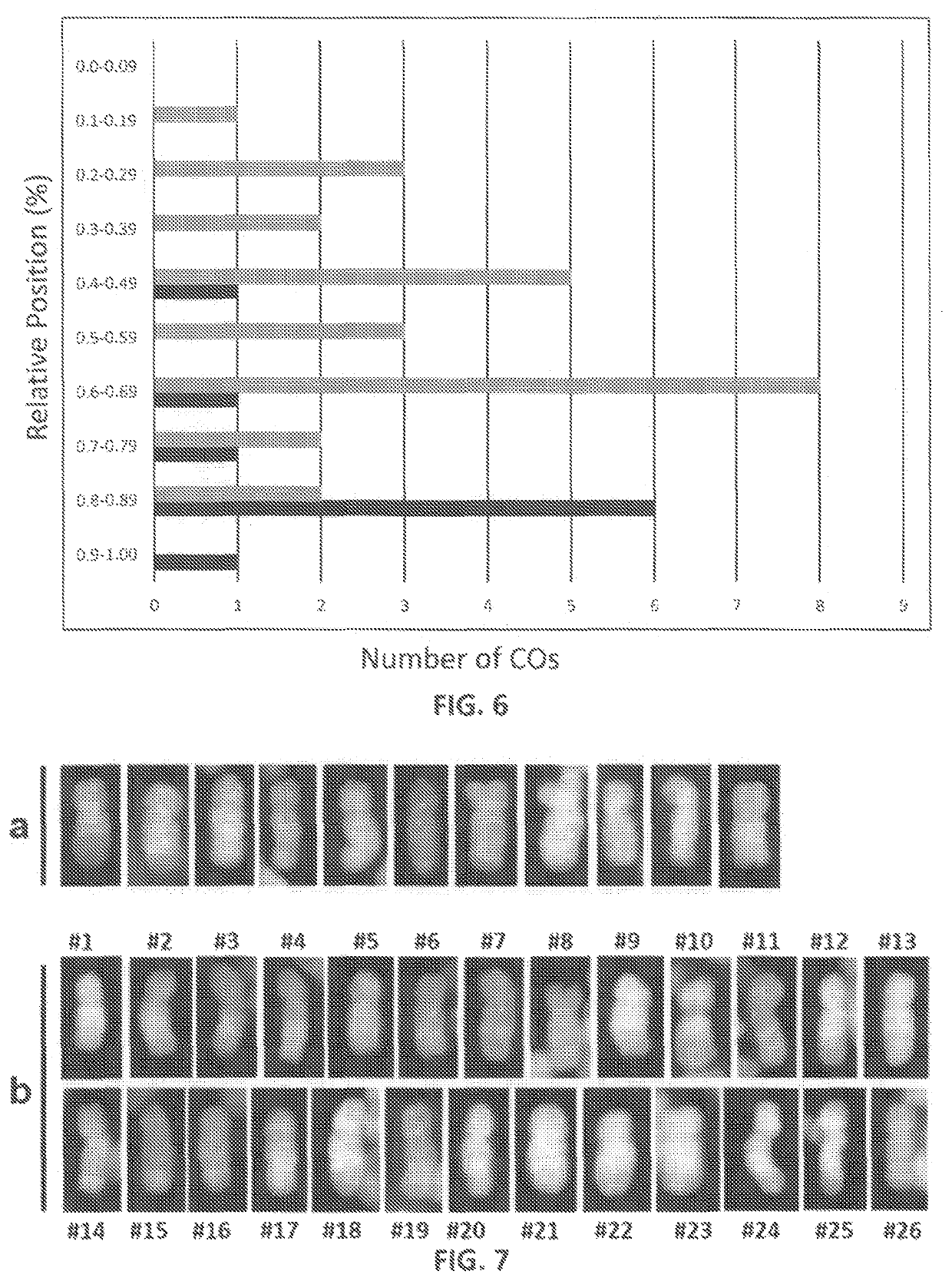Genetic system for promoting recombination and gene transfer in wheat
a gene transfer and gene technology, applied in the field of new wheat genetic stocks, can solve the problems of variable (albeit extremely low) frequency, cross-over and exchange of genetic material, and extremely low recombination frequency using these approaches, so as to enhance the recombination potential for efficient breeding, promote homoeologous recombination, and promote the effect of recombination
- Summary
- Abstract
- Description
- Claims
- Application Information
AI Technical Summary
Benefits of technology
Problems solved by technology
Method used
Image
Examples
example 1
Introduction
[0044]Meiotic recombination is central to evolution, speciation, plant breeding, and crop improvement. The meiotic recombination process is initiated by the formation of DNA double-strand breaks (DSBs) by the known protein, Spo11. Double-strand breaks are essential for promoting pairing and synapsis of homologous chromosomes in plants, fungi, and mammals Meiotic recombination results in the formation of cytological structures known as chiasmata at the sites of genetic crossovers. The formation of at least one chiasma between homologous chromosome pairs (the obligate genetic crossover) is essential for accurate chromosome segregation at the first meiotic division and genetic recombination.
[0045]Polyploid organisms with multiple sets of homoeologous chromosomes have evolved additional mechanisms for regulating homoeologous chiasmate metaphase I pairing (hereafter referred to as homoeologous metaphase I pairing) and genetic recombination. Pairing among homoeologous chromoso...
example 2
[0075]Proof of concept for enhancing homoeologous recombination between wheat and alien chromosomes was explored.
[0076]In the general approach, the disomic substitution DS5Mg(5D) line (TA6675) is first crossed with the homozygous ph1b stock. The TA6675 line contains 20 pairs of wheat chromosomes and chromosome pair 5Mg from Ae. geniculata substituting for chromosome 5D of wheat. The F1 of the first cross will be heterozygous for chromosome 5Mg / 5D and Ph1 / ph1b. Separately, a homozygous ph1b stock is also crossed with plants homozygous for the target alien chromosome(s). The F1 plants from this cross will be heterozygous for Ph1 / ph1b and the target alien chromosome(s). After intercrossing both F1 s, genotypes will be selected that are homozygous for ph1b / ph1b and heterozygous for chromosomes 5Mg / 5D and the target alien chromosome(s).
[0077]For determining the efficiency of this novel strategy, we tested its efficacy for promoting homoeologous recombination of wheat chromosomes with two...
PUM
 Login to View More
Login to View More Abstract
Description
Claims
Application Information
 Login to View More
Login to View More - R&D
- Intellectual Property
- Life Sciences
- Materials
- Tech Scout
- Unparalleled Data Quality
- Higher Quality Content
- 60% Fewer Hallucinations
Browse by: Latest US Patents, China's latest patents, Technical Efficacy Thesaurus, Application Domain, Technology Topic, Popular Technical Reports.
© 2025 PatSnap. All rights reserved.Legal|Privacy policy|Modern Slavery Act Transparency Statement|Sitemap|About US| Contact US: help@patsnap.com



